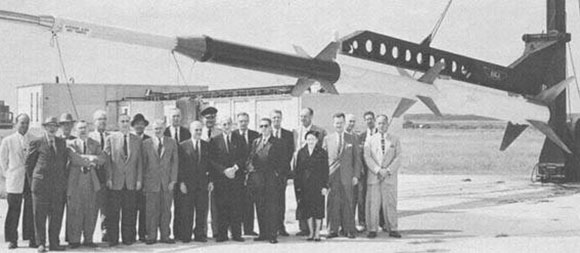NASA HISTORY: NACA Committee on Aerodynamics Meets At Test Facility, Work Leads Up To X-15 Project
By Space Coast Daily // June 24, 2016

(NASA) – As rocket-powered research planes began to fly higher and faster, the National Advisory Committee for Aeronautics (NACA) began to contemplate the possibility of space flight and how the organization would fit into that new field.
On June 24, 1952, the NACA Committee on Aerodynamics met on Wallops Island, VA, at the NACA test facility.
During the meeting, Robert J. Woods, a member of the committee and the designer of the Bell X-5 research aircraft, suggested a study group on “space flight and associated problems” in response to interest by various groups in sending vehicles into the upper atmosphere.
The committee formally resolved to increase its study of flights at altitudes between 12 and 50 miles and at speeds of between Mach 4 and 10.
The committee also resolved to investigate the problems associated with flights at even higher altitudes and speeds up to “the velocity of escape from Earth’s gravity.”
The NACA Executive Committee approved a slightly revised version of these resolutions on July 14, 1952.
After preliminary studies, the Langley Aeronautical Laboratory identified control and aerodynamic heating as two serious problems impeding the development of practical spacecraft. These studies and further investigations led to the X-15 project in the mid-1950s.
The NACA would serve as the basis for creating NASA in 1958, but it was already becoming a space research organization well before that time.












